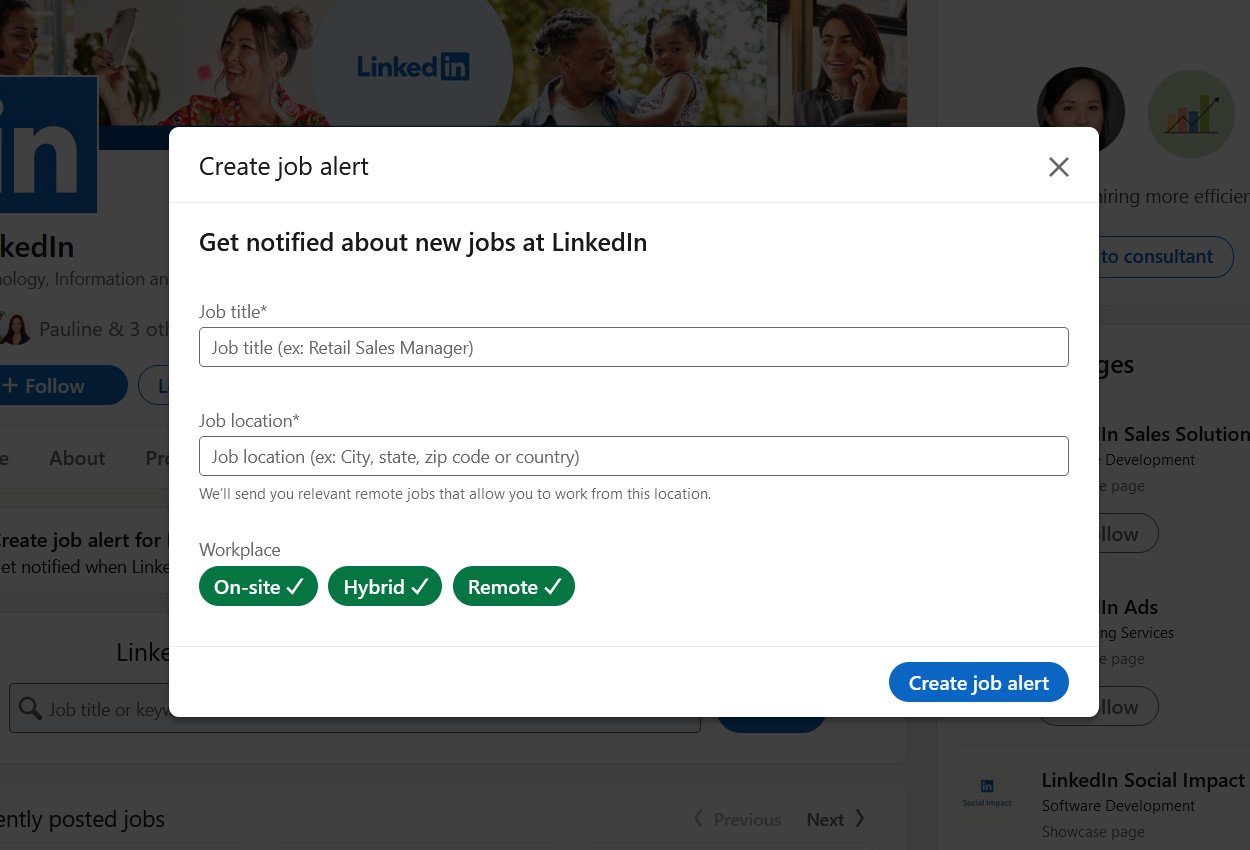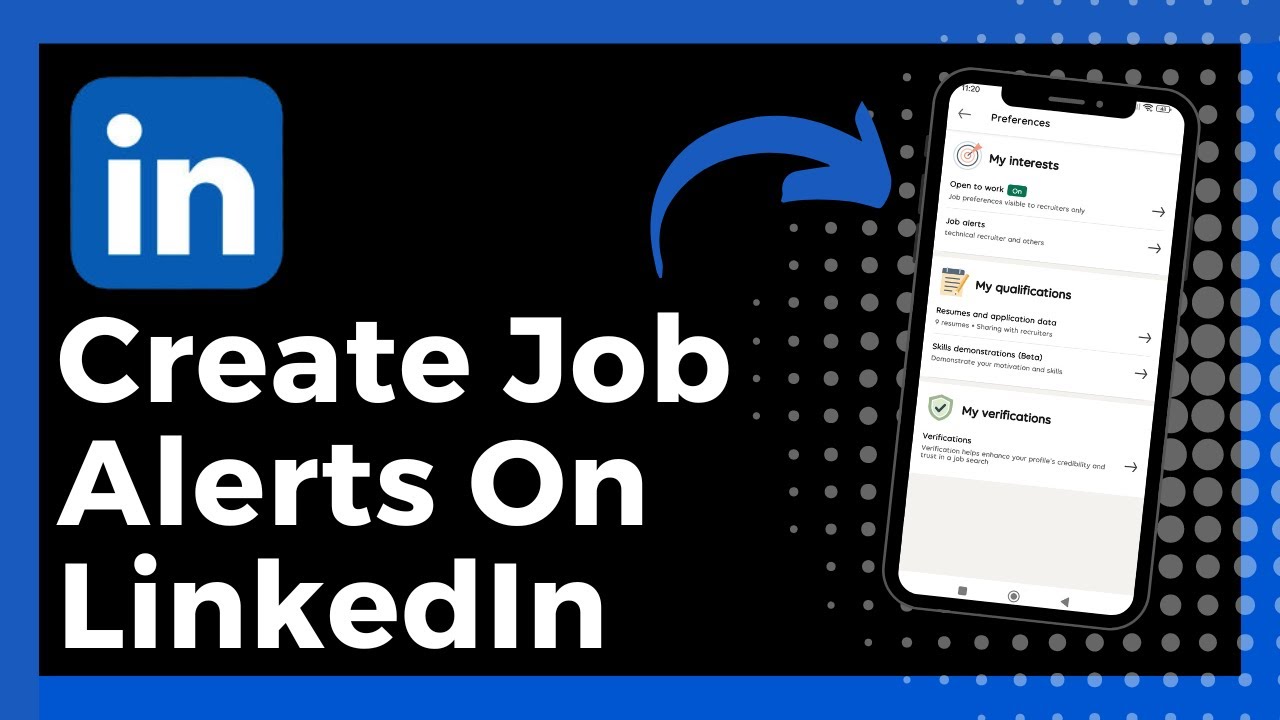In today’s competitive job market, staying updated on job opportunities is crucial. LinkedIn, the world's largest professional network, offers a powerful feature known as Job Alerts. This tool allows you to receive notifications tailored to your career interests directly in your inbox. Whether you're looking for remote work, a managerial position, or a role in a specific industry, LinkedIn Job Alerts can streamline your job search, ensuring you never miss a chance to land your dream job.
Why Personalizing Job Notifications is Important

Personalizing your job notifications on LinkedIn is not just a nice-to-have; it's essential for an effective job search. Here are several reasons why:
- Relevance: By customizing alerts, you receive job listings that align with your specific skills and interests. Imagine getting notifications for roles like "Marketing Manager at a tech startup" instead of generic listings that may not excite you.
- Efficiency: Tailored alerts help you manage your time more effectively. Instead of sifting through hundreds of irrelevant job postings, you can focus on the ones that matter most, making your job hunt feel less overwhelming.
- Quick Response: In fast-paced job markets, timing is everything. Personalized alerts ensure you’re among the first to know about new openings, allowing you to apply quickly and improve your chances of landing interviews.
- Networking Opportunities: Personalized notifications often highlight positions at companies you're interested in. This allows you to connect with current employees or alumni for insights, making your application stand out.
Additionally, personalizing your job alerts can help you identify trends in your industry. If you notice an uptick in job postings for a certain role or skill set, it may be worth investing time in developing those skills, keeping you ahead of the curve.
In short, taking the time to customize your job notifications on LinkedIn can transform your job search experience, leading to more relevant opportunities and a higher likelihood of success. Remember, it’s not just about finding a job; it’s about finding the right job for you.
Also Read This: How to Remove Connections on LinkedIn: A Simple Process
3. How to Set Up Job Alerts on LinkedIn

Setting up job alerts on LinkedIn is a breeze, and it’s a fantastic way to keep your job search organized and tailored to your needs. Let’s walk through the steps together!
First things first, make sure you’re logged into your LinkedIn account. Once you're in, follow these simple steps:
- Go to the Jobs Section: On your LinkedIn homepage, find the “Jobs” option in the top menu. Click on it to enter the job search area.
- Search for Jobs: Use the search bar to enter keywords related to the job you're looking for, such as “marketing manager” or “software engineer.” You can also specify a location if you'd like.
- Refine Your Search: After hitting enter, utilize the filters on the left sidebar. You can filter by company, experience level, and more. This will help you find the jobs that truly match your interests.
- Set the Alert: Once you have your search results, look for the “Create job alert” toggle at the top of the page. Flip it on! You’ll now see options to set how often you want to be notified (daily, weekly, etc.).
- Save Your Alert: After setting your preferences, click on “Save” to activate your job alert. Voilà! You're all set!
Now you’ll start receiving notifications in your LinkedIn inbox whenever a job matching your criteria is posted. Make sure to check your inbox regularly so you don’t miss out on any exciting opportunities!
Also Read This: Understanding LinkedIn Connection Request Limits and How to Maximize Them
4. Customizing Your Job Alert Preferences

Now that you’ve set up your job alerts, let’s talk about how to customize them for an even more tailored experience. Personalization is key, and LinkedIn allows you to tweak your alerts to better fit your job search needs.
Here’s how you can customize your job alert preferences:
- Adjust Keywords: Review the keywords you used to create your alert. Are they too broad? Or perhaps too specific? Don’t hesitate to tweak them to better capture the jobs you really want.
- Location Settings: If you’re open to remote work or willing to relocate, make sure your location settings reflect that. You can add multiple locations to broaden your search.
- Frequency of Alerts: Depending on your job search urgency, you might want to adjust how often you receive alerts. If you’re actively looking, daily alerts might be best, but if you’re casually browsing, weekly could suffice.
- Job Experience Level: Tailor your alerts based on your experience level—whether you’re entry-level, mid-career, or executive. This will filter out jobs that aren’t relevant to your career stage.
- Save Multiple Alerts: Don’t hesitate to create multiple job alerts for different roles or locations. For instance, you could have one alert for “Content Writer” in New York and another for “SEO Specialist” in California.
By customizing your job alerts, you’ll not only save time but also boost your chances of finding the job that’s just right for you. It’s all about making your search efficient and effective!
Also Read This: How to Remove Your Profile from LinkedIn
5. Managing Existing Job Alerts
Once you've set up your job alerts on LinkedIn, the real magic happens when you take the time to manage them effectively. Just like any tool, job alerts can become cluttered if not maintained. Here’s how to keep them streamlined and relevant:
Check Your Alerts Regularly: Make it a habit to review your job alerts at least once a month. This allows you to fine-tune your preferences based on your evolving career goals. You might find that certain job types no longer interest you or that new roles have emerged in your field.
Edit or Delete Alerts: If you find that an alert is sending too many irrelevant notifications, don’t hesitate to edit it. Adjust the keywords or locations to better match your interests. For alerts that no longer serve you, simply click "delete" to remove them. It’s all about keeping your job search focused!
Respond to Notifications: When you receive job alerts, give them a quick look. If something catches your eye, don’t procrastinate! Apply promptly, as many employers appreciate quick responses. This can often lead to a more favorable impression.
Manage Frequency: LinkedIn allows you to customize how often you receive these alerts, whether daily or weekly. Choose a frequency that suits your job search strategy. Too frequent alerts can lead to notification fatigue, while too infrequent can make you miss out on opportunities.
By managing your existing job alerts effectively, you position yourself to receive the most relevant job listings. It’s all about quality over quantity, and with a little maintenance, your job alerts can become a powerful ally in your job search!
Also Read This: How to Make LinkedIn Profile Visible Only to Recruiters: Customizing LinkedIn Privacy Settings for Recruiters
6. Tips for Effective Job Alerts
Creating job alerts on LinkedIn is just the beginning. To truly leverage this feature, here are some tips to enhance your job alert experience:
- Use Specific Keywords: Instead of broad terms like "marketing," try more specific phrases like "digital marketing strategist" or "content marketing manager." This increases the chances of receiving tailored job notifications.
- Include Synonyms: Job titles can vary widely across companies. If you're looking for a "project manager," also consider alerts for "project coordinator" or "program manager" to capture more opportunities.
- Set Location Preferences: If you're open to remote work, don't forget to include "remote" in your location settings. Conversely, if you're targeting specific cities, ensure they are reflected in your alerts.
- Stay Updated on Industry Trends: Sometimes, the best job titles evolve as industries change. Keep an eye on emerging roles in your field and update your alerts accordingly to snag the latest opportunities.
- Engage with Your Network: Share your job alert preferences with your connections. They might know of openings that aren't posted yet and can provide valuable referrals.
By following these tips, you’ll ensure your job alerts are not just effective but are working diligently in your favor. Remember, in the world of job searching, being proactive and engaged can make all the difference!
Also Read This: How Many Connections Can You Send on LinkedIn Per Week? Staying Within the Limits
7. Common Mistakes to Avoid with Job Alerts
When managing job alerts on LinkedIn, it’s easy to trip up and miss out on opportunities simply due to common missteps. Here are some pitfalls to steer clear of:
- Overloading on Alerts: Setting too many alerts can lead to notification fatigue. Try to focus on a few specific roles or industries that truly interest you. This way, your inbox won’t be overflowing with irrelevant listings, making it easier to spot the ones that matter.
- Not Updating Preferences: As your career evolves, so should your job alert settings. If you’re moving from a marketing role to a tech position, take a moment to adjust your alerts accordingly. This ensures you receive the most relevant opportunities.
- Ignoring Location Settings: If you want remote work or specific geographic locations, make sure to reflect that in your job alerts. Many users forget to set this, leading to job notifications that are not feasible for their current situation.
- Failing to Customize Keywords: Utilizing broad keywords can bring in irrelevant results. Instead, tailor your keywords to be more specific to your desired role. For instance, instead of just “designer,” try “UX/UI designer” to hone in on your target job type.
- Neglecting Company Preferences: If you have specific companies you’re interested in, make sure to include them in your alerts. This can help you catch opportunities that might not come through general searches.
By avoiding these common mistakes, you can make your LinkedIn job alerts more effective, ensuring you receive the most relevant and timely notifications. Remember, the goal is to streamline your job search, not complicate it!
8. Conclusion: Maximizing Your Job Search with LinkedIn Alerts
In the fast-paced world of job searching, LinkedIn alerts are a powerful tool to keep you informed about new opportunities. By taking the time to customize and manage these alerts effectively, you can ensure that your job search is not just efficient but also tailored to your career aspirations.
Here are some final tips to help you maximize your job search:
- Regularly Review Your Alerts: Set a reminder to review your job alerts every month. This helps ensure they still align with your career goals and interests.
- Engage with Your Network: Don’t just rely on alerts; actively engage with your connections. Often, opportunities come through networking rather than traditional job postings.
- Stay Open-Minded: Sometimes the perfect job might not match your exact criteria. Be open to exploring related roles that may offer exciting growth opportunities.
- Utilize LinkedIn Resources: Take advantage of LinkedIn’s job search resources like articles, webinars, and community groups to stay updated on industry trends.
By strategically managing your LinkedIn job alerts, you not only receive timely notifications but also position yourself at the forefront of potential employers’ minds. Embrace this proactive approach, and watch your job search transform into a more rewarding and successful journey!
 admin
admin








